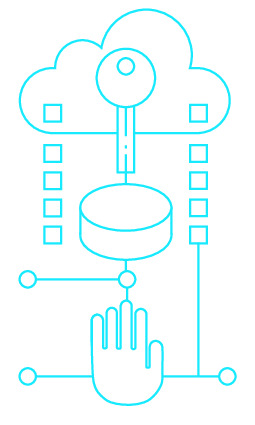|
|
|
| Module code: PIB-SES |
|
|
2V+2PA (4 hours per week) |
|
5 |
| Semester: 5 |
| Mandatory course: no |
Language of instruction:
German |
Assessment:
Project + oral examination
[updated 23.09.2025]
|
KIB-SES (P221-0211) Computer Science and Communication Systems, Bachelor, ASPO 01.10.2021
, semester 5, optional course
PIB-SES (P221-0211) Applied Informatics, Bachelor, ASPO 01.10.2022
, semester 5, optional course
PIB-SES (P221-0211) Applied Informatics, Bachelor, SO 01.10.2026
, semester 5, optional course
|
60 class hours (= 45 clock hours) over a 15-week period.
The total student study time is 150 hours (equivalent to 5 ECTS credits).
There are therefore 105 hours available for class preparation and follow-up work and exam preparation.
|
Recommended prerequisites (modules):
PIB-PR1 Programming 1
PIB-PR2 Programming 2
PIB-PR3 Programming 3
[updated 01.08.2025]
|
Recommended as prerequisite for:
|
Module coordinator:
Prof. Dr. Markus Esch |
Lecturer:
Dipl.-Inf. Christopher Olbertz
[updated 01.08.2025]
|
Learning outcomes:
After successfully completing this module, students will be able to:
- explain the basic concepts of the Spring framework.
- apply the Spring Core Framework and SpringBoot.
- develop web applications, web services and desktop applications with Spring and SpringBoot
[updated 23.09.2025]
|
Module content:
The module begins with an introduction to the fundamental concepts of the Spring framework. From there, it moves on to SpringBoot as a modern simplification, and then uses the combination of Spring-Core and SpringBoot as the course progresses. In the course of the module, a small example application will be developed for use in a real-world environment.
1. Introduction:
- What is Spring?
- Introduction to the basic concepts
- Structure of a Spring project
2. Spring concepts
- Inversion of control
- Dependency injection
- Declaring Spring Beans
- Configuring Spring Beans
- Annotation-based configuration
- Java-based configuration
3. Aspect-Oriented Programming (AOP)
- What ist AOP?
- Basic concepts of AOP
- AOP with Spring
- Advantages and disadvantages of AOP
4. SpringBoot
- What is SpringBoot?
- Structure of a SpringBoot project
- Advantages of SpringBoot
- Simple terminal applications with SpringBoot
5. Additional Spring functions
- Using customized configurations
- Event handling
- Resource abstraction
- Type conversions with ConversionService
- Using JSON
- Scheduling
6. Connection of relational databases
- Review of the Java Persistence API (JPA)
- JdbcTemplate
- Using the JPARepository interface
- Formulating standard queries
- Formulating customized queries
- Best practices
7. Test-driven development with Spring
- Introduction to test-driven development
- Spring-specific elements for testing
- Mocking framework Mockito
- Combination of Spring and Mockito
- Testing the data access layer
8. JavaFX and SpringBoot
- Advantages of combining JavaFX and SpringBoot
- Review JavaFX
- Implementation using FxWeaver
9. Web applications with SpringBoot
- SpringMVC
- Templating framework Thymeleaf
- RESTful API
- Analyzing queries
- Dynamic content generation
- Securing web applications with SpringSecurity
- Exception handling and error messages
- Asynchronous queries
- Best practices
- Testing the web layer
- Documentation of a RESTful API with OpenAPI
[updated 23.09.2025]
|
Recommended or required reading:
Christian Ullenboom: "Spring Boot 3 und Spring Framework 6 - Das umfassende Handbuch", Rheinwerk Computing
[updated 23.09.2025]
|


